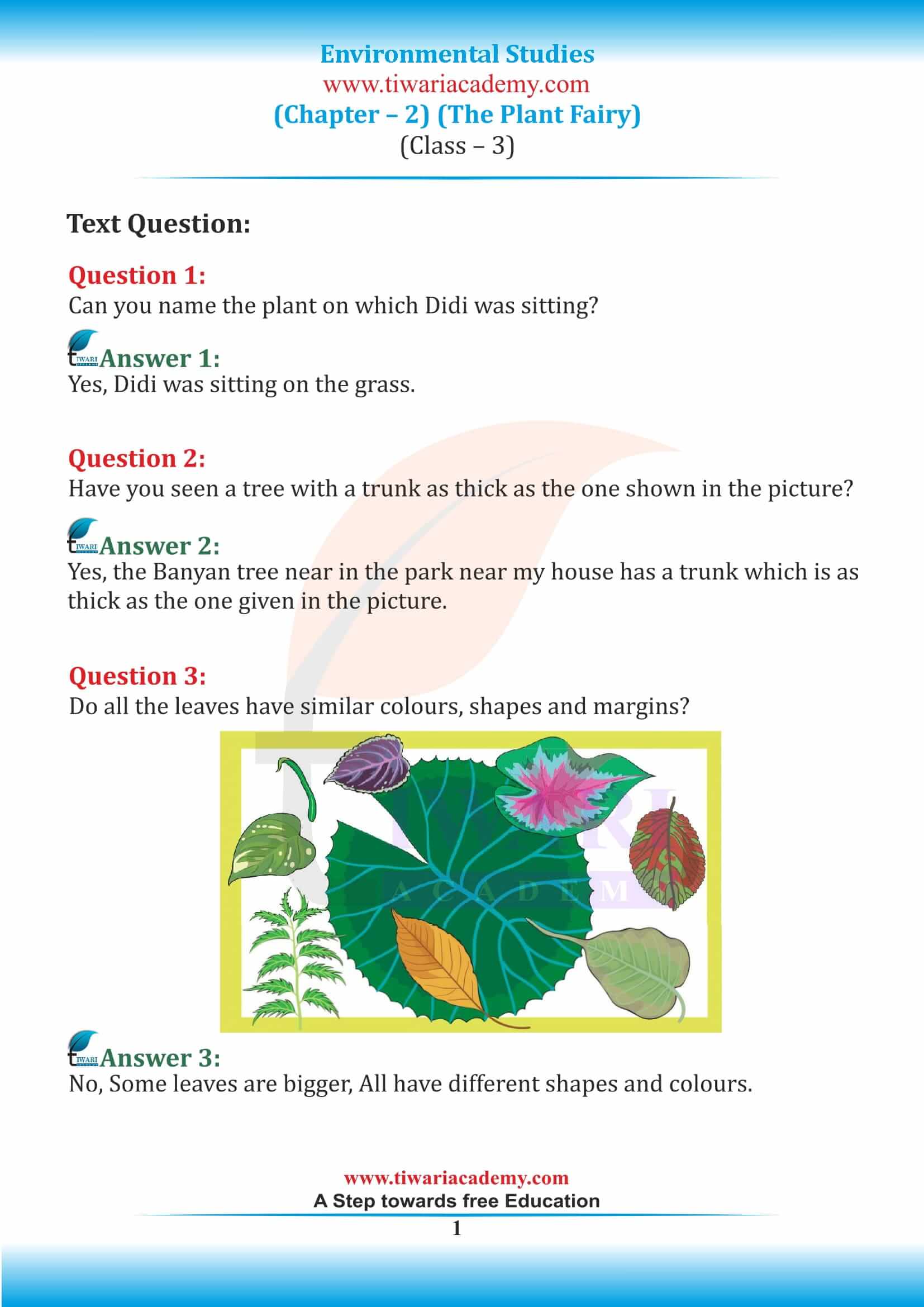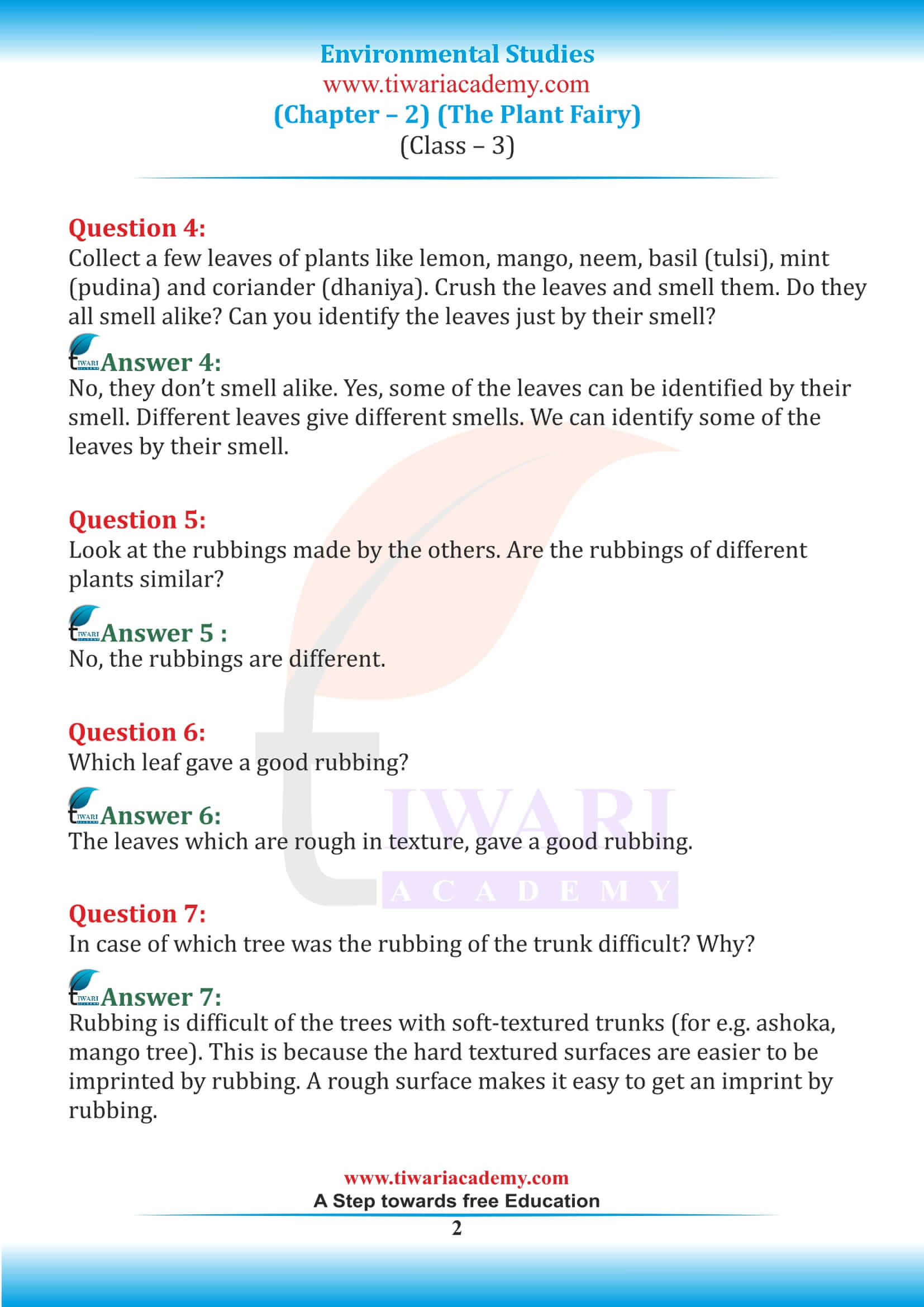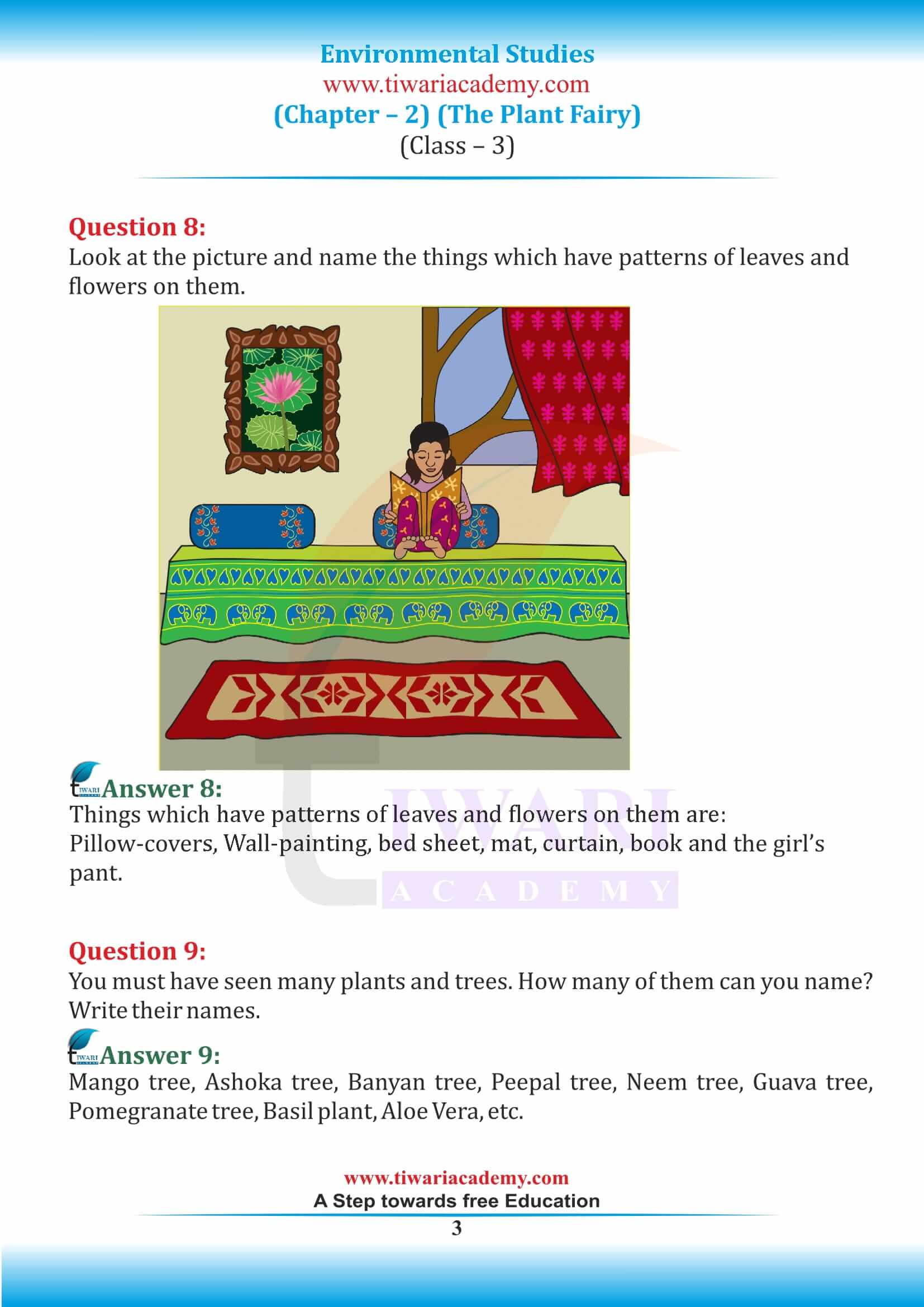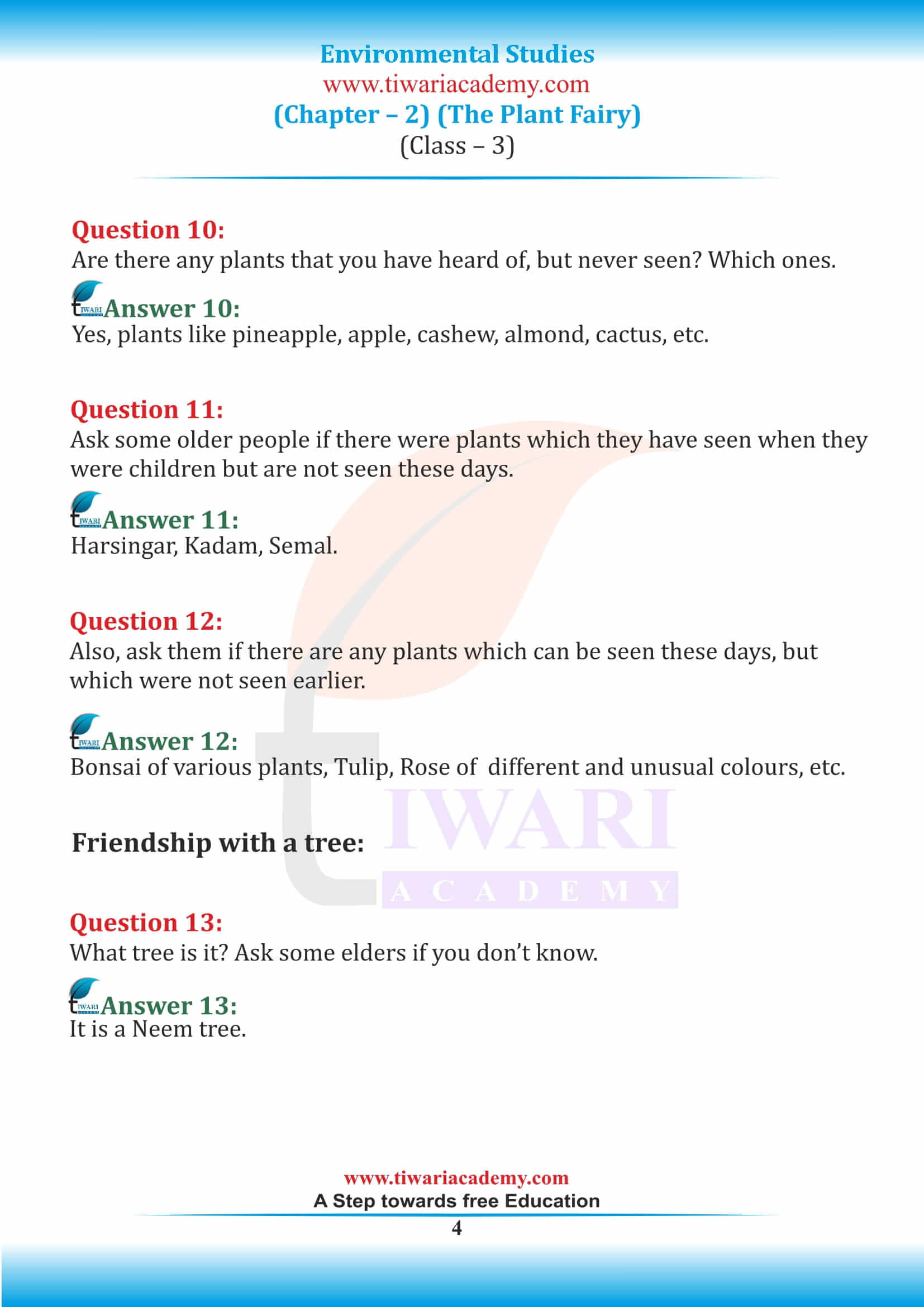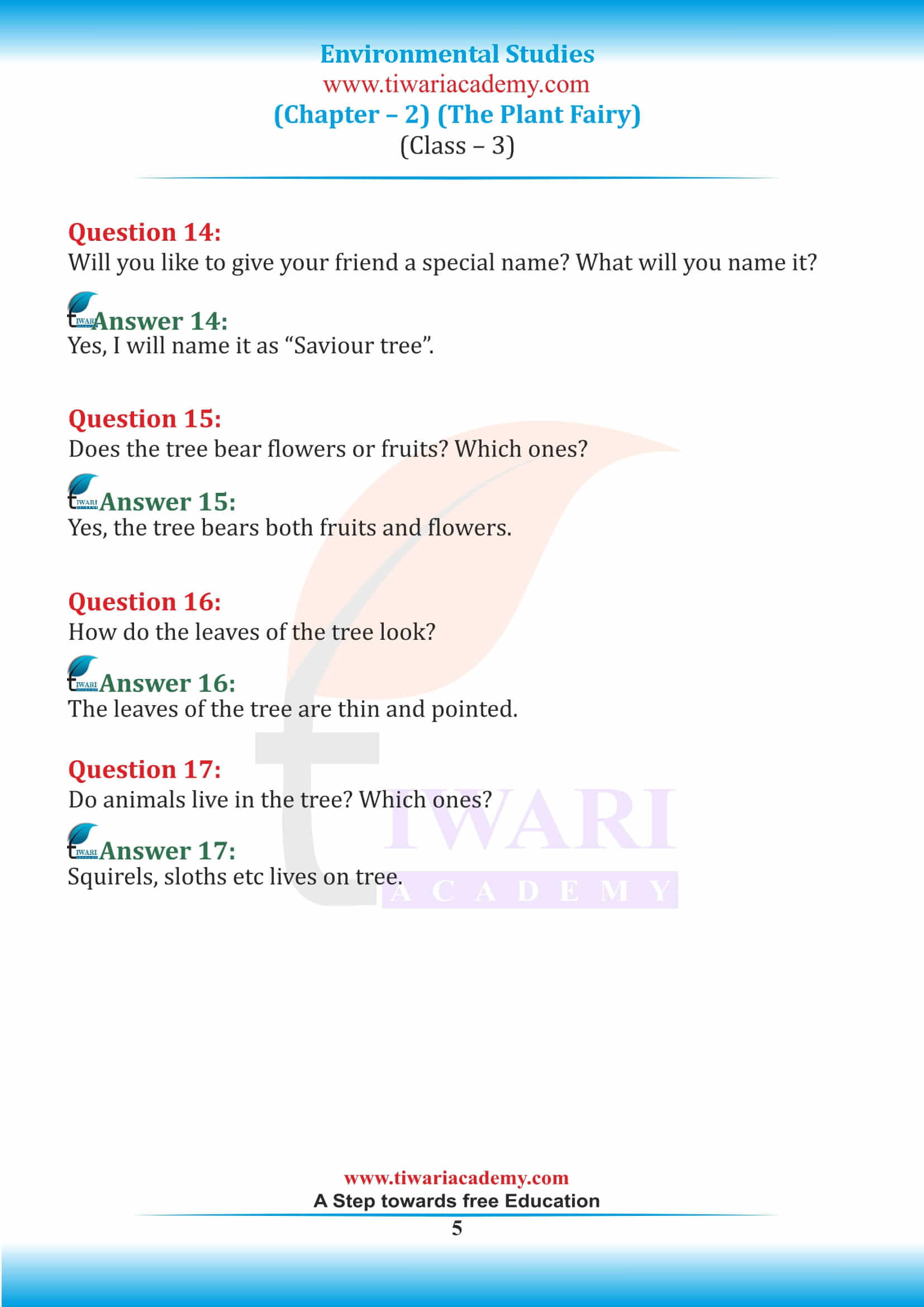NCERT Solutions for Class 3 EVS Chapter 2 The Plant Fairy in English and Hindi Medium. All answers from NCERT textbook Environmental Studies Looking Around for CBSE 2024-25. Student can download all the question answers based on Chapter 2 of 3rd EVS in English and Hindi Medium. In Chapter 2 of Grade 3 EVS student will definitely enjoy the game Plant Fairy and get more interaction with the plants and nature.
NCERT Solutions for Class 3 EVS Chapter 2
NCERT Solutions for Class 3 EVS Chapter 2 The Plant Fairy
Class 3 EVS Chapter 2 Question and Answers
Can you name the plant on which Didi was sitting?
Yes, Didi was sitting on the grass.
Have you seen a tree with a trunk as thick as the one shown in the picture?
Yes, the Banyan Tree near in the park near my house has a trunk which is as thick as the one given in the picture.
Do all the leaves have similar colours, shapes and margins?
No, all the leaves have different colours, shapes and margins.
Collect a few leaves of plants like lemon, mango, neem, basil (tulsi), mint (pudina) and coriander (dhaniya). Crush the leaves and smell them. Do they all smell alike? Can you identify the leaves just by their smell?
No, they don’t smell alike. Yes, some of the leaves can be identified by their smell. Different leaves give different smells. We can identify some of the leaves by their smell.
Question:
Look at the rubbings made by the others. Are the rubbings of different plants similar?
Answer:
No, the rubbings are different.
Question:
Which leaf gave a good rubbing?
Answer:
The leaves which are rough in texture, gave a good rubbing.
Question:
In case of which tree was the rubbing of the trunk difficult? Why?
Answer:
Rubbing is difficult of the trees with soft-textured trunks (for e.g. ashoka, mango tree). This is because the hard textured surfaces are easier to be imprinted by rubbing. A rough surface makes it easy to get an imprint by rubbing.
Question:
Look at the picture and name the things which have patterns of leaves and flowers on them.
Answer:
Things which have patterns of leaves and flowers on them are:
Pillow-covers, Wall-painting, bed sheet, mat, curtain, book and the girl’s pant.
Question:
You must have seen many plants and trees. How many of them can you name? Write their names.
Answer:
Mango tree, Ashoka tree, Banyan Tree, Peepal Tree, Neem Tree, Guava Tree, Pomegranate Tree, Basil plant, Aloe Vera, etc.
Question:
Are there any plants that you have heard of, but never seen? Which ones.
Answer:
Yes, plants like pineapple, apple, cashew, almond, cactus, etc.
Question:
Ask some older people if there were plants which they have seen when they were children but are not seen these days.
Answer:
Harsingar, Kadam, Semal.
Question:
Also, ask them if there are any plants which can be seen these days, but which were not seen earlier.
Answer:
Bonsai of various plants, Tulip, Rose of different and unusual colours, etc.
FRIENDSHIP WITH A TREE
Question:
What tree is it? Ask some elders if you don’t know.
Answer:
Ans. It is a Neem Tree.
Question:
Does the tree bear flowers or fruits? Which ones?
Answer:
Yes, the tree bears both fruits and flowers.
Question:
How do the leaves of the tree look?
Answer:
Ans. The leaves of the tree are thin and pointed.
Question:
Do animals live in the tree? Which ones?
Answer
Yes, animals like squirrel, sparrows, etc.
Class 3 EVS Chapter 2 Extra Questions Set 1
A plant has different parts like other living organisms which are divided into two parts:
Which plant out of the following is a herb?
These plants have thin, woody stems and are medium sized plants which are called ……………
Plants with thick, hard stem are called ________ like peepal, coconut, gulmohar etc.
Climbers are the plants which need ………….. to grow:
Class 3 EVS Chapter 2 Extra Questions Set 2
Pumpkin, watermelon and strawberry are called:
Which out of the following is false about trees?
The function of the root is to:
The plants which give us medicines are:
………………..and ………………….are the beverages we get from plants.
Class 3 EVS Chapter 2 Extra Questions Set 3
The leaves are called the:
The parts of plants that are eaten as leaves are:
Stem of a plant has different functions like:
Shrubs are planted as a:
Class 3 EVS Chapter 2 Extra Questions Set 4
Potato and Ginger are the ………………of the plant we eat.
Fruits like _________ and _________ are eaten by us.
Flower is the ________ of the plant
Photosynthesis is the process by which the plants make their own _______.
Why we should not cut the plants?
FAQs
Do you think the games given in chapter 2 of class 3rd EVS book can be help children to get along well?
There are certain games that have been discussed and that students have to form a group in order to play these games. That is how these games can make students of one class get along really well.
How do you think chapter 2 of 3rd class EVS can teach students about the varieties of trees?
Since the chapter is from environmental science chapter 2 of class 3 EVS will indeed tell students something about nature and this time in the story you will see kids collect different shapes and sizes of leaves and discuss the name of such trees.
What other part of the class 3 EVS chapter 2 do you like?
I think the best part of the story is the activity given in the chapter about tracing the pattern of leaves and the trees with different colors in order to get designs and patterns.
